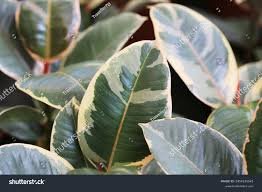Ficus elastica ‘Tineke,’ also known as the variegated rubber plant, is a stunning indoor plant prized for its striking leaves. The creamy-white, green, and blush pink variegation makes each leaf a work of art. For plant lovers, the appearance of a new leaf is always exciting, as it signifies healthy growth and proper care. However, nurturing new leaves on a Ficus Tineke requires attention to specific environmental and care factors.
Here’s everything you need to know about encouraging and caring for new leaves on your Ficus elastica Tineke.
How to Spot a New Leaf
When a new leaf is about to emerge, you’ll notice a red or pink sheath forming at the top of the plant. This sheath gradually unfurls to reveal the new leaf. During this stage, your plant needs consistent care, as any stress can affect the leaf’s development or cause it to emerge smaller or deformed.
1. Light: Essential for Variegation and Growth
Proper lighting is crucial for Ficus Tineke, especially during periods of new leaf formation. Place your plant in bright, indirect light to ensure the new leaves maintain their variegation. Insufficient light can result in dull, less vibrant new leaves or even cause them to revert to green. Avoid direct sunlight, which can burn the delicate new growth.
2. Watering: Keep it Consistent
When a new leaf is forming, Ficus Tineke requires consistent watering to support its growth. Check the soil regularly and water when the top 1-2 inches are dry. Be careful not to overwater, as soggy soil can cause root rot and stunt new growth.
3. Humidity: A Boost for Healthy New Leaves
New leaves thrive in higher humidity levels. If your home is dry, mist the plant lightly or place it near a humidifier. High humidity not only supports the development of new foliage but also prevents browning edges, a common issue with variegated leaves.
4. Fertilization: Feed for Growth
During the growing season (spring and summer), feed your Ficus Tineke with a balanced liquid fertilizer every 4-6 weeks. This provides the nutrients needed for vibrant, healthy new leaves. Skip fertilizing in the dormant fall and winter months.
5. Common Challenges with New Leaves
- Curled Leaves: Often caused by inconsistent watering or low humidity.
- Damaged Sheaths: If the sheath doesn’t unfurl properly, gently mist it to soften and encourage opening.
- Small or Pale Leaves: This may indicate insufficient light or nutrient deficiency.
Ficus Elastica Tineke New Leaf Why New Leaves Matter
Each new leaf is a sign that your Ficus Tineke is thriving in its environment. Watching the vibrant variegation and glossy texture of fresh leaves emerge is one of the joys of caring for this plant. By maintaining stable conditions and meeting its care needs, you’ll see your plant flourish and produce stunning new growth regularly.
Conclusion
Ficus elastica ‘Tineke’ is a rewarding houseplant that showcases its beauty with every new leaf. To ensure healthy growth, provide bright, indirect light, consistent watering, and a humidity-friendly environment. With these care tips, your Ficus Tineke will reward you with vibrant, variegated leaves that bring elegance to your indoor space.


